6 - 28 October | 2017
Collaborations between creators, materials and techniques
London Glassblowing's 2015 exhibition 'Synergy' yielded an incredibly diverse set of collaborations between artists, materials and techniques. Now, years later, the results of the show continue to resonate and confirm what ideas develop when artists push the boundaries of their usual practice.
In October 2017, London Glassblowing was pleased to present 'Synergy II' a follow-up exhibition of past collaborations two years on from the original, as well as new developments from a range of different makers.
Exhibitor List:
James Alexander, Scott Benefield, Andrew Collins, James D. Clark, James Devereux, Stewart Hearn, Katherine Huskie, Nicky Lawrence, Peter Layton, Bruce Marks, Laura McKinley, Ali Moenck, Harry Morgan, Jochen Ott, Catherine Phillips, Tim Rawlinson, David Reekie, Morag Reekie, Bruno Romanelli, Layne Rowe, Anthony Scala, Cathryn Shilling, Sophie Thomas, Louis Thompson, Vezzini & Chen, Andrea Walsh, Rachael Woodman, Neil Wilkin
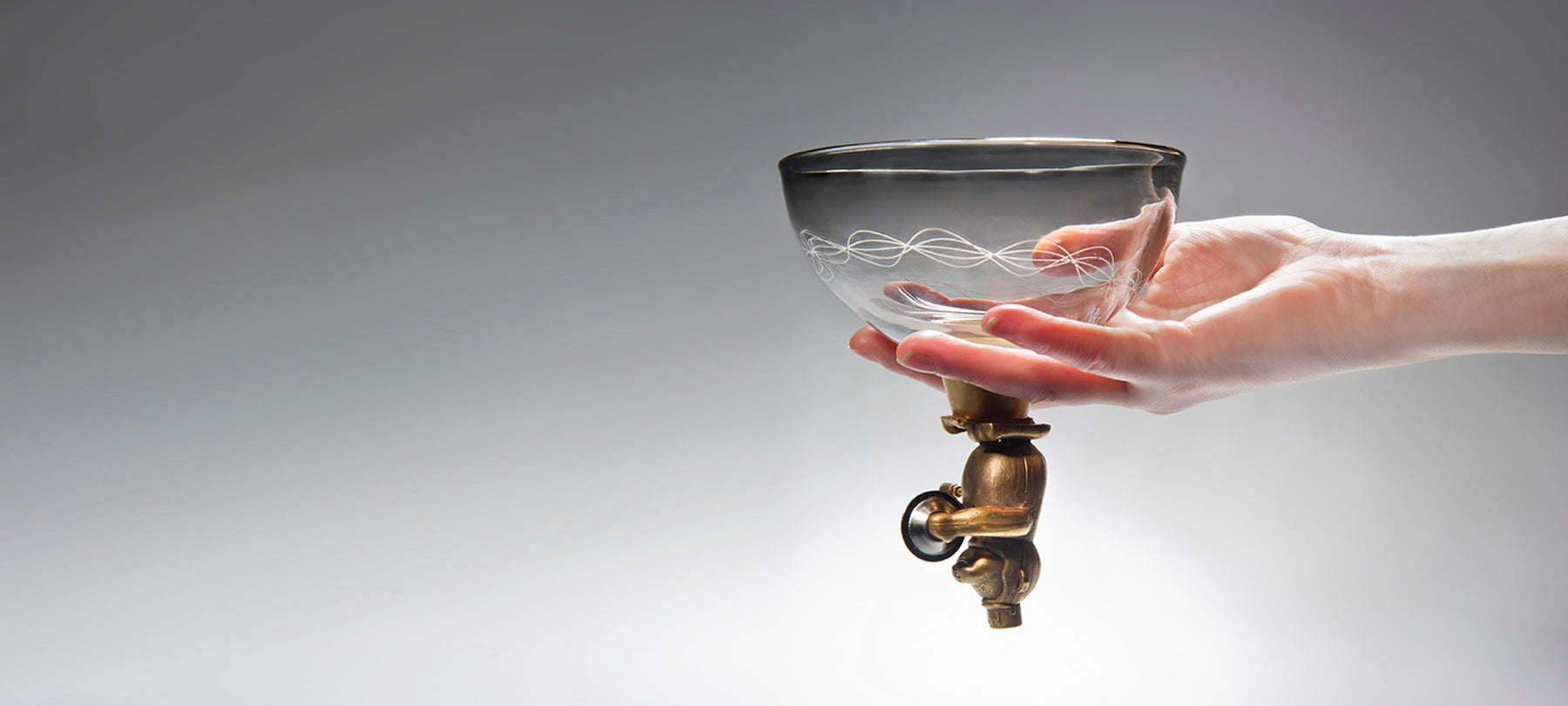


JAMES ALEXANDER
Shōnan is a development of James Alexander’s previous work inspired by his time spent in Japan during his youth. For this work James has brought together a range of techniques from the use bicarbonate of soda to create bubbles in the glass, to cup casing and cane work. Once bringing all these techniques together on the blowing iron, he freehand sculpts the final shape.




ANDREW COLLINS
The urban convention of throwing shoes over telephone lines has many dark connotations. In most cases it is to signify bullying, gang territory, areas drugs are sold or the murder of a gang member. The piece aims to highlight social inequalities through the integration of contrasting status symbols.
Making the shoes was a multi-stage process. I made moulds from shoes, blew glass into them, cut the excess, ground them down, engraved some, masked and sandblasted them, drilled holes, attached laces and gilded them. – Andrew Collins


BRUCE MARKS & ALI MOENCK
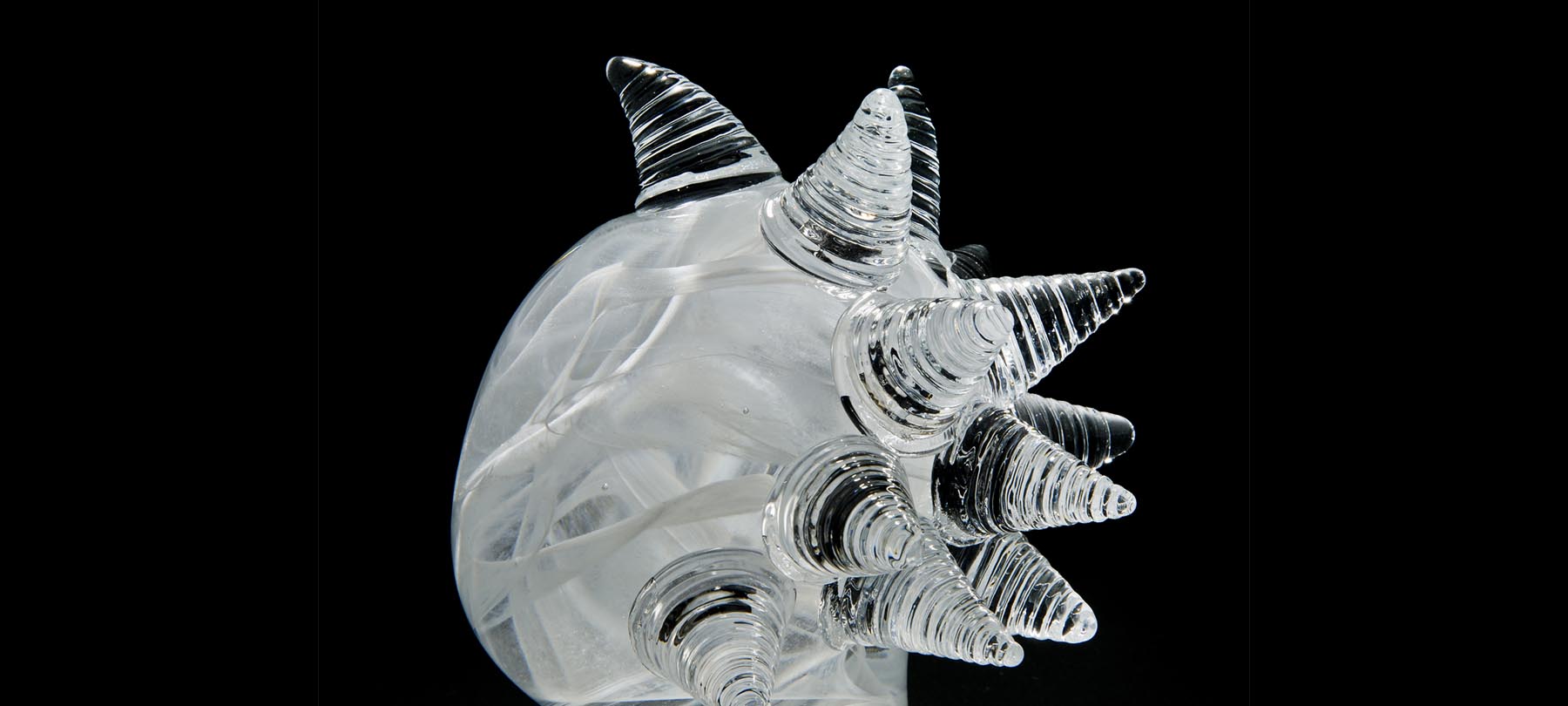
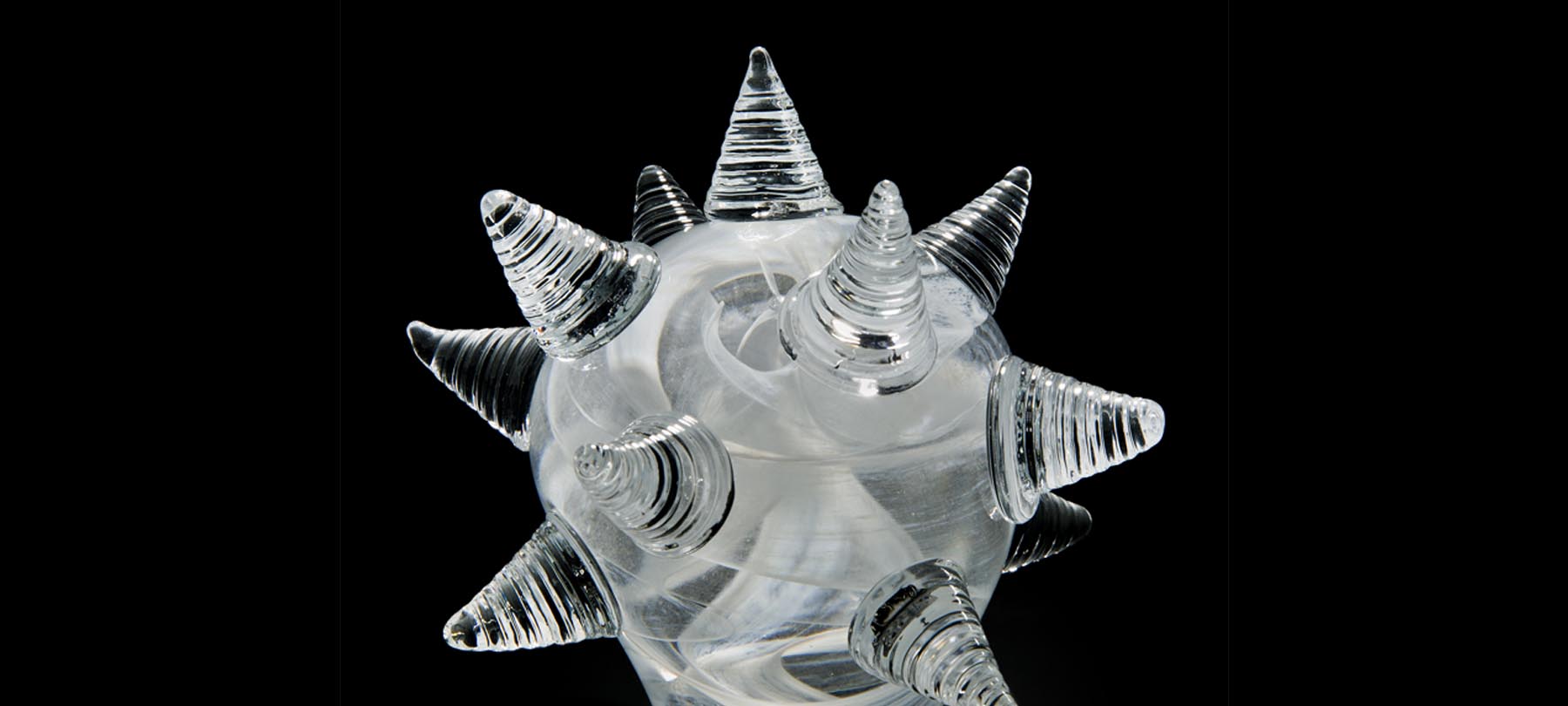
CATHERINE PHILLIPS & LAURA MCKINLEY
Synergy – The interaction or cooperation of two or more organisations, substances, or other agents to produce a combined effect greater than the sum of their separate effects. With this is mind we wanted to come up with a body of work to celebrate both of our practices, the materials we use and our own relationship.
Syncytium, from the Greek word meaning “together,” explores, in angular forms, the raw, textured and dense clay body in contrast to the clear, transparent highly polished glass. Both forms highlight the innate and unique properties of the materials as individual works. When the forms come together they create multifaceted sculptural compositions that are greater than the sum of their parts.
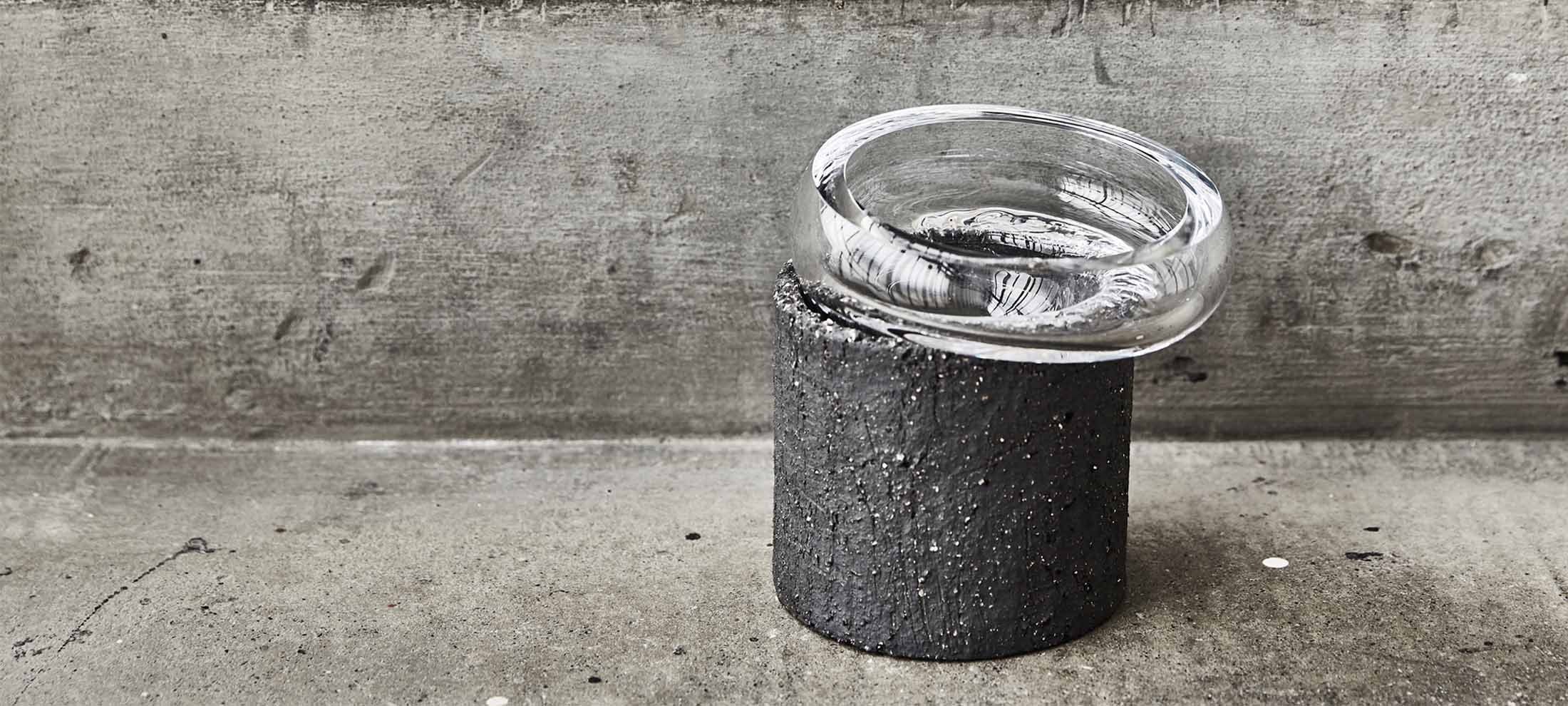
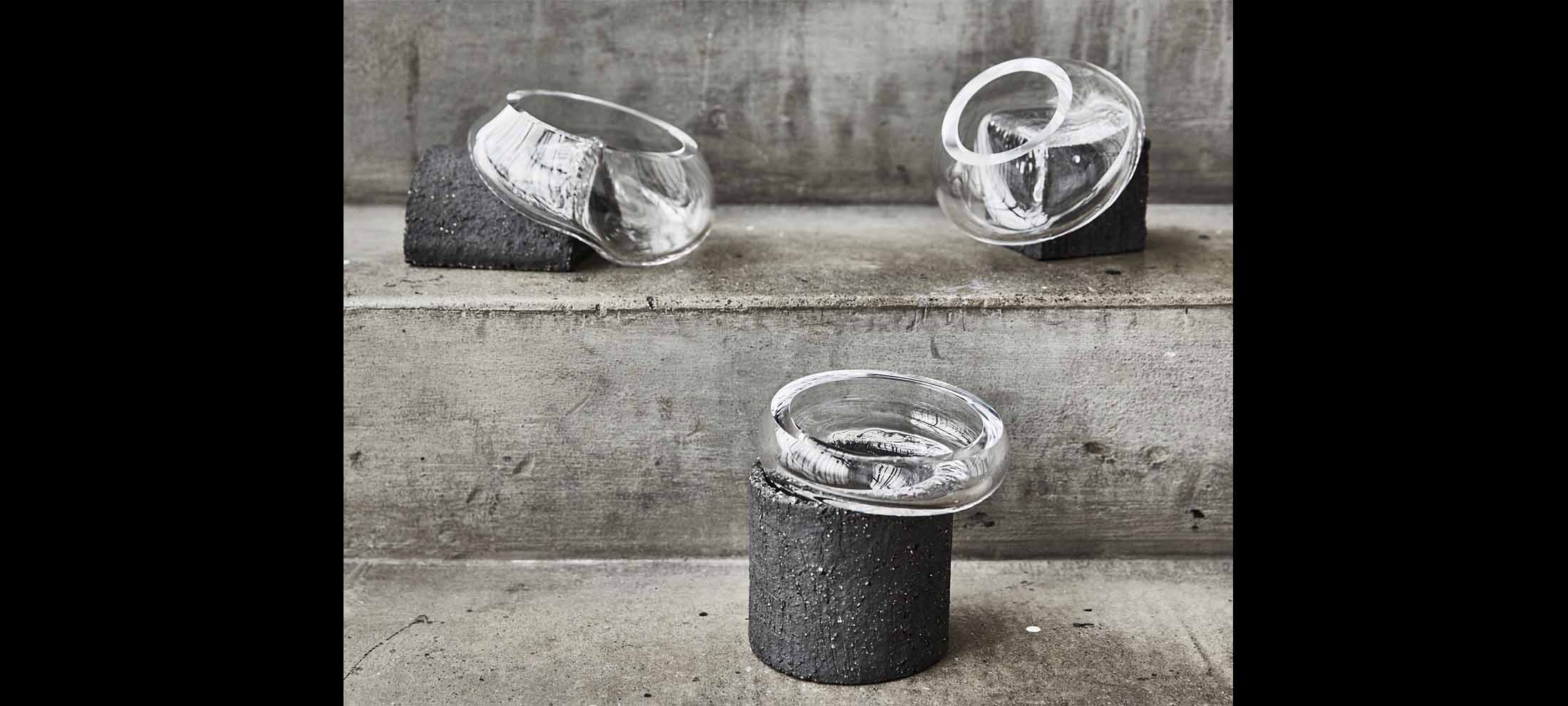
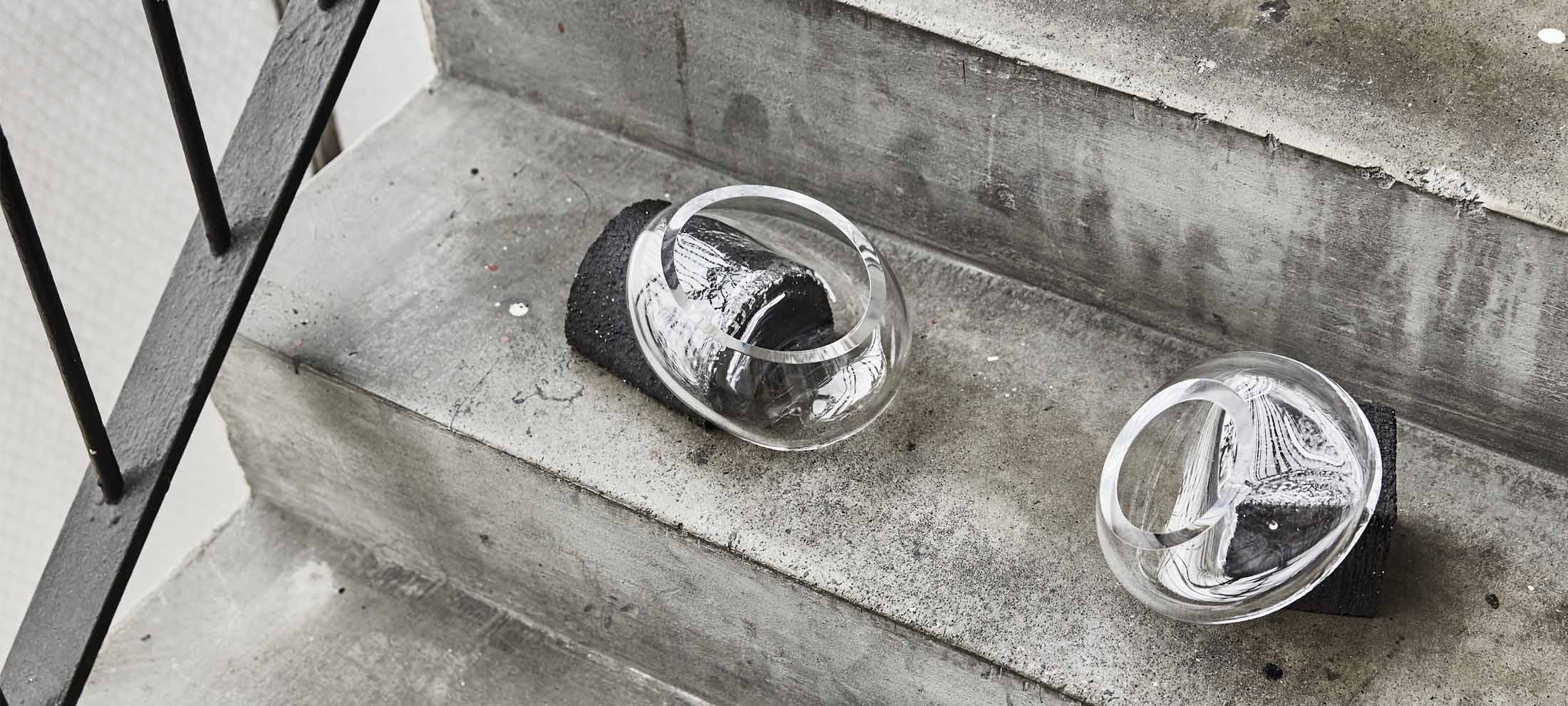
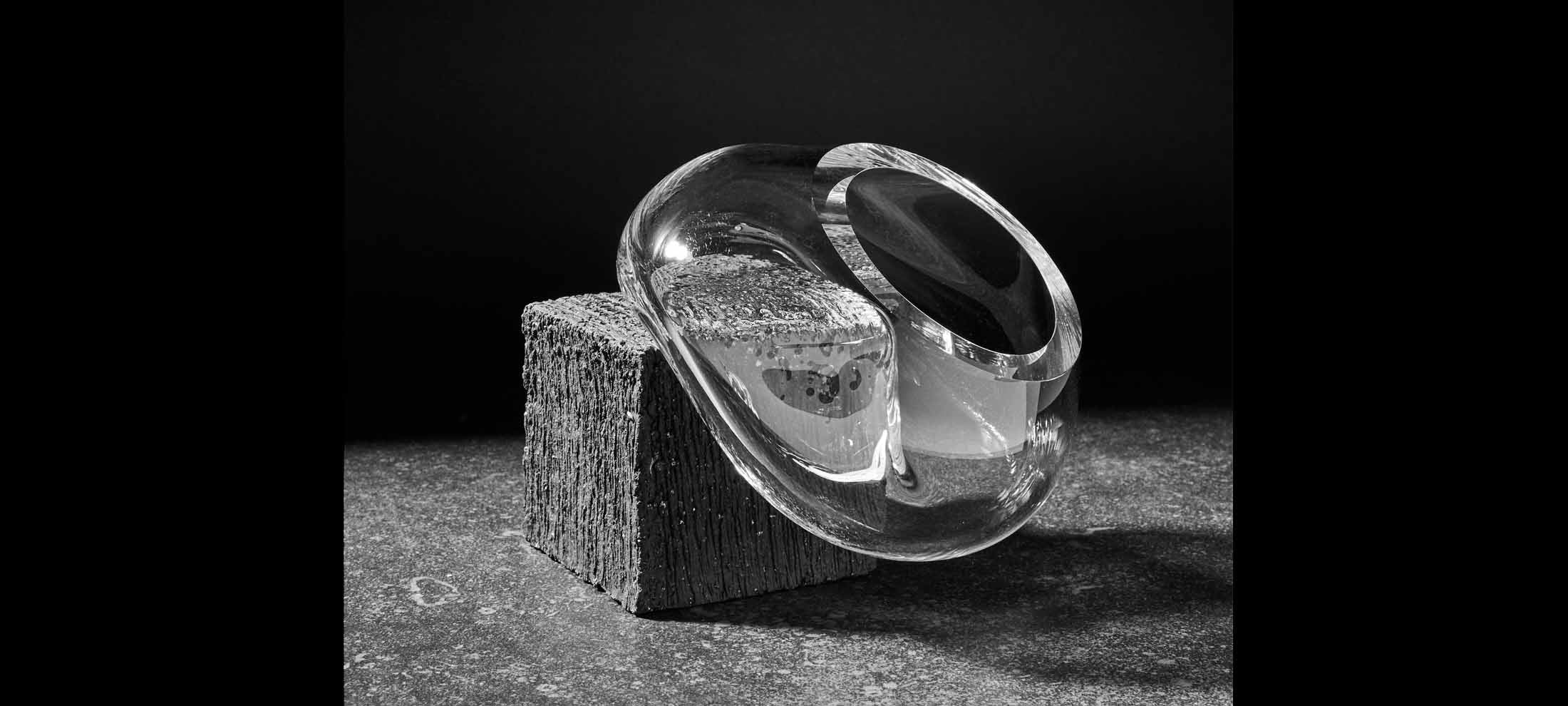
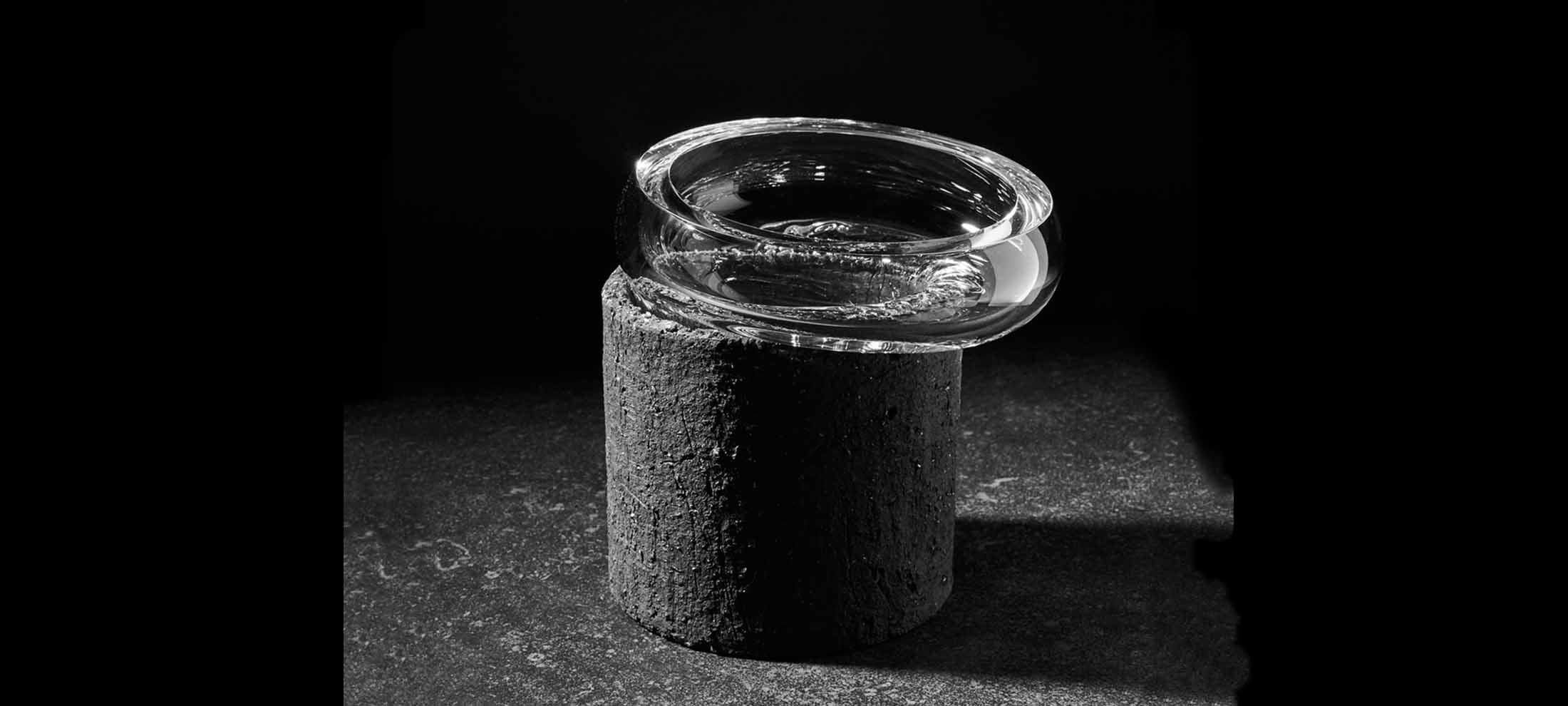
LAURA MCKINLEY
My goblets are inspired by a 16th century glass used for drinking games in Bavaria. Drinking games were popular in many European countries at this time and special objects were made to promote alcohol consumption in a social and playful manner. When consuming alcohol the tendency is to revert back to a childlike state which has inspired my intriguing and playful drinking goblets.
- Laura McKinley
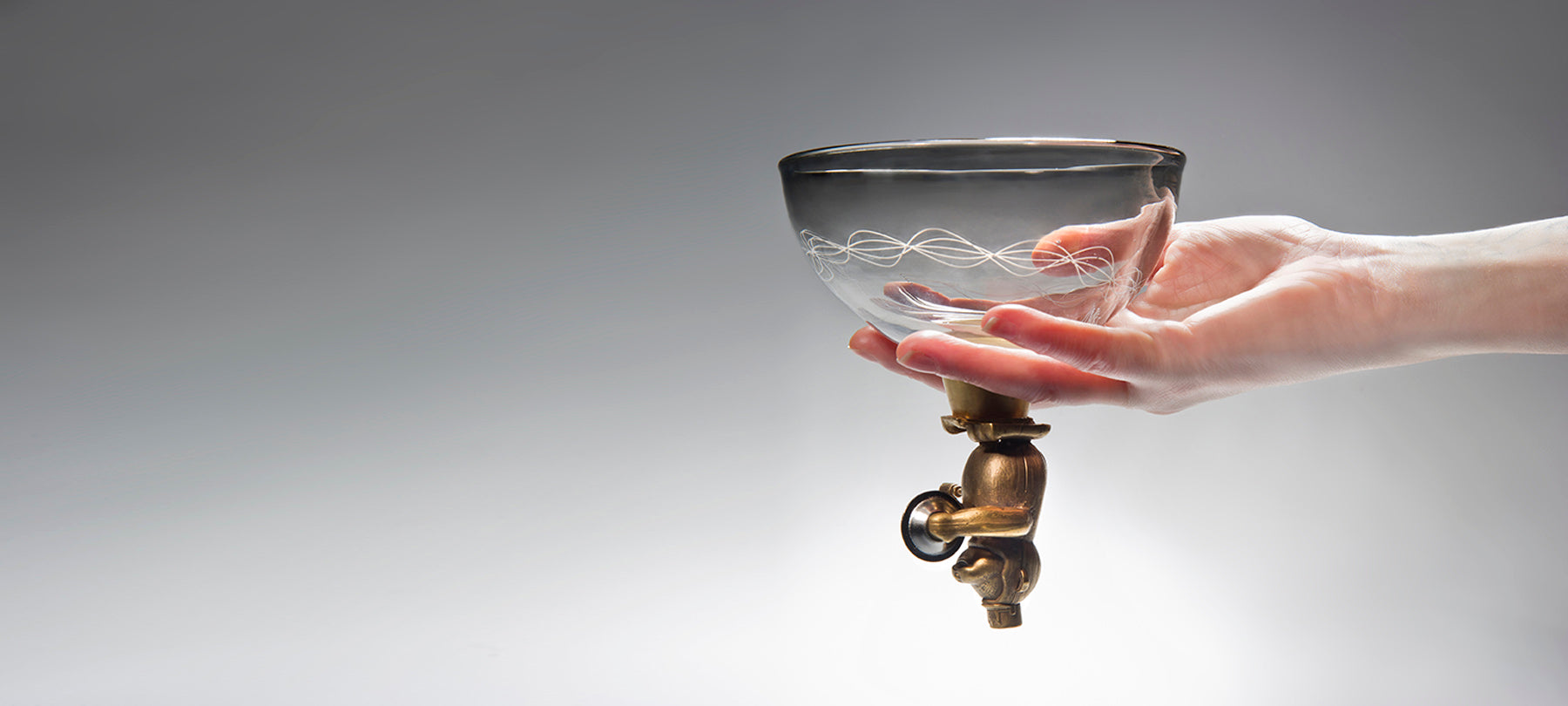
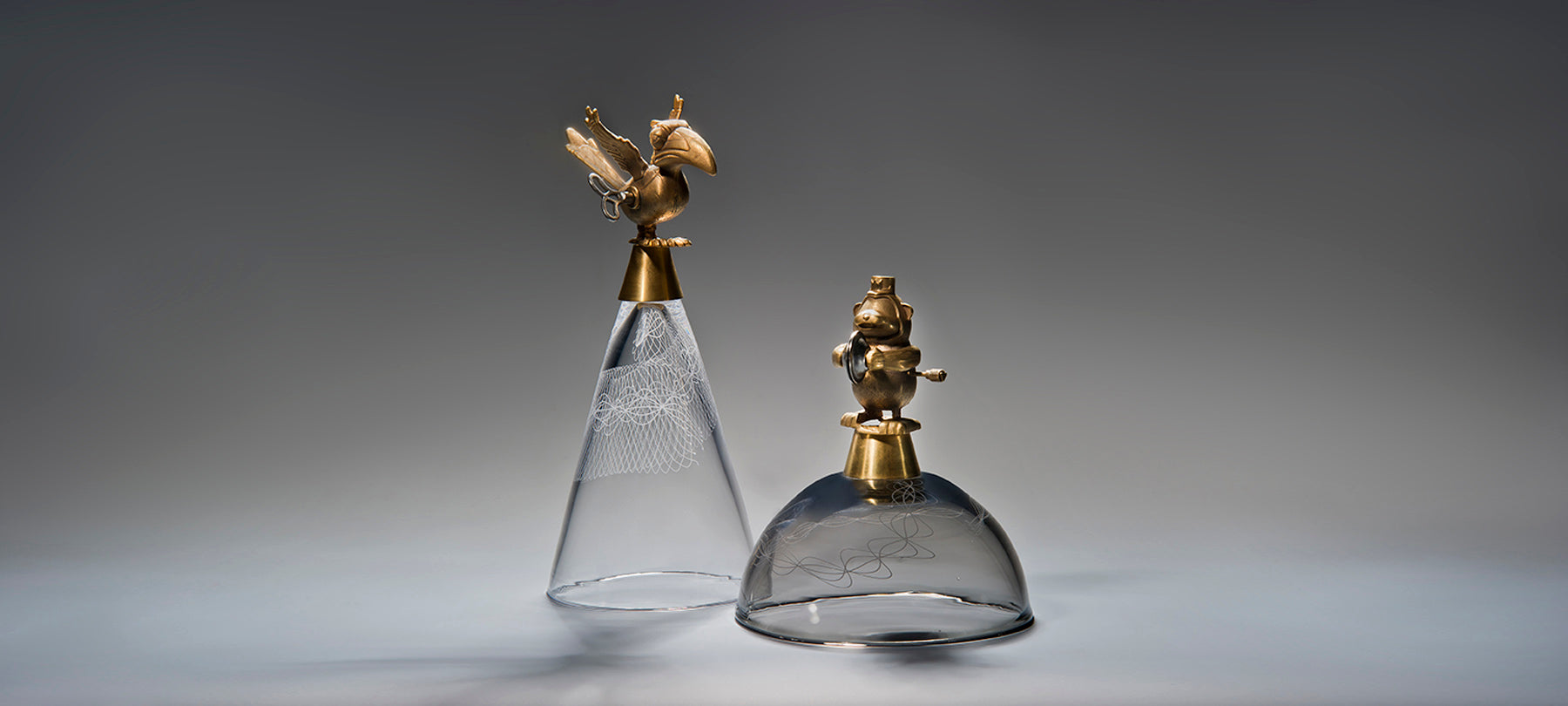
HARRY MORGAN
Harry Morgan’s working process is inspired by the Venetian glassblowing technique, Murrini, where glass stringers are arranged into a pattern within a mould and fused together. Rather than fusing the glass, Harry uses concrete or metal to bind the stringers together and he enjoys exploring the conflicting relationship of the two substances- the tension between the fragile transparent stringers and the brutally dense concrete.




CATHRYN SHILLING
A garniture is a collection of matching, but usually not identical, decorative objects intended to be displayed together. The word garniture derives from the French verb garnir, which means ‘to garnish’.
These pieces are made using the roll-up technique, an adaptation of a Venetian method used by glass blowers for centuries. The vessels are made from pre-fused glass sheets that are picked up hot, rolled and hand blown. The roll-up technique enables Cathryn Shilling to create three dimensional objects that have a greater level of control and design than can usually be achieved in a hot shop.
The final process happens once the glass has cooled. The piece is finished by polishing the pontil mark, the scar left from where the punty iron was broken from the bottom of the vessel. The presence of such a scar indicates that the piece is hand blown.









